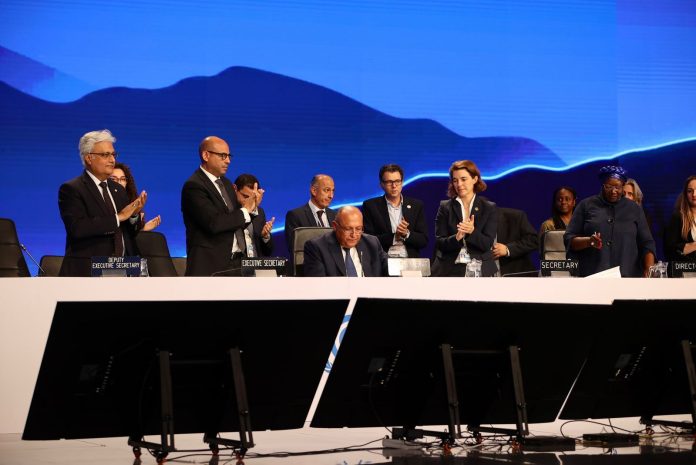The 2022 United Nations Climate Change Conference of the Parties of the UNFCCC, also known as COP27, was held from 6 November to 18 November 2022 in Sharm El Sheikh, Egypt. It was the 27th UN Climate Change conference and it is being considered one of the most historic conferences, due to the loss and damage fund announcement. Here are the key takeaways from the conference.
Developing countries have been seeking any sort of financial assistance for the rescuing and rebuilding of the physical and social infrastructure that was affected by extreme weather events for almost thirty years. Therefore, the loss and damage fund that was agreed upon at the conference was a major milestone. However, it is not known how the fund will be set up and who will contribute, as there has been no agreement on how the finance will be managed and provided, or where it will come from.
Another highlight of the conference revolved around the 2015 Paris agreement that discussed the goal of keeping the rise of temperature “well below 2C” above pre-industrial levels and efforts to keep the increase to 1.5C. Since then, research has clearly shown that 2C is not safe, which is why at COP26 in Glasgow, countries agreed to adhere to the 1.5C limit. Although, it was also agreed to return each year to strengthen the commitments on cutting greenhouse gas emissions as they were too weak at the time, and this process was called the ratchet. However, at COP27, some countries tried to back out of the 1.5C goal and abolish the ratchet. They failed to do so, but a resolution was taken out, which revolved around causing emissions to peak by 2025.
There was also a World Bank reform at the conference, because a number of developed and developing countries called for the same, and they also suggested reforms for other publicly funded finance institutions as they failed to provide the funding that was required to assist poor countries cut down on their greenhouse gas emissions, and adapting to the impacts of climate change. Therefore, reforms involving recapitalization of the development banks in order for them to be able to provide more assistance to the ones in need were discussed in great detail. It was suggested that the World Bank would be able to provide approximately half of the required funds.
At COP26, a commitment to phase down the use of coal was agreed upon, which marked the first time a resolution on fossil fuels had been included in the final text. This year, India led the discussion to include a commitment to phase down all fossil fuels, and this became a subject of intense debate, which failed in the end, and the outcome was the same as Glasgow.
The final text of COP27 also contained a provision to boost low-emissions energy, which could include a reform of wind and solar farms to nuclear reactors and coal-fired power stations which would be fitted with carbon capture and storage. Or, it could also be interpreted to mean gas, which is a major fossil fuel, but which evidently has lower emissions than coal.






























